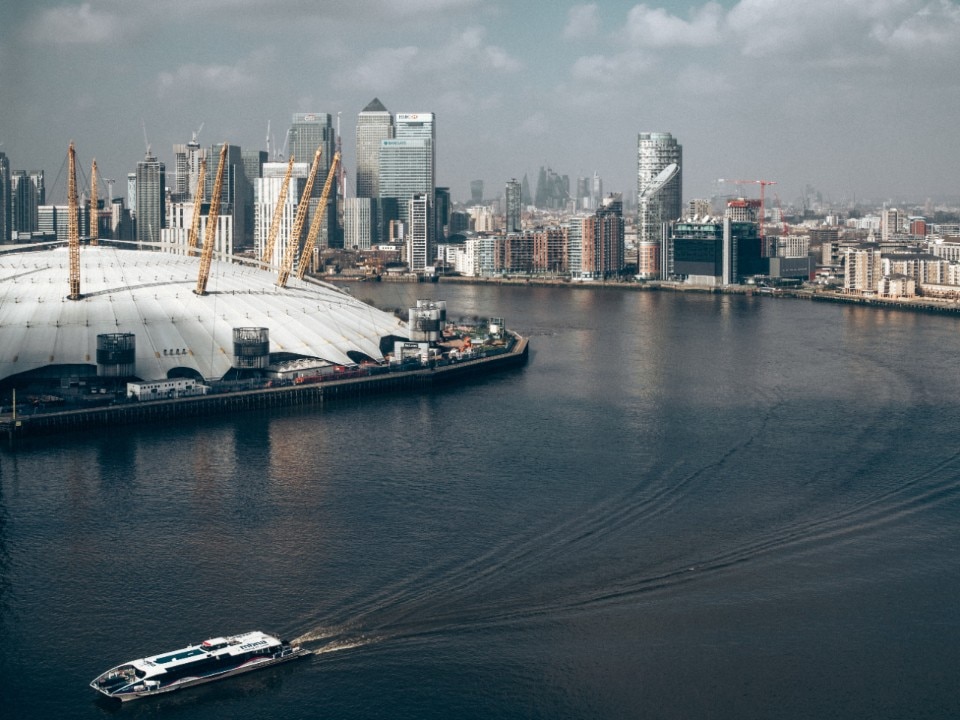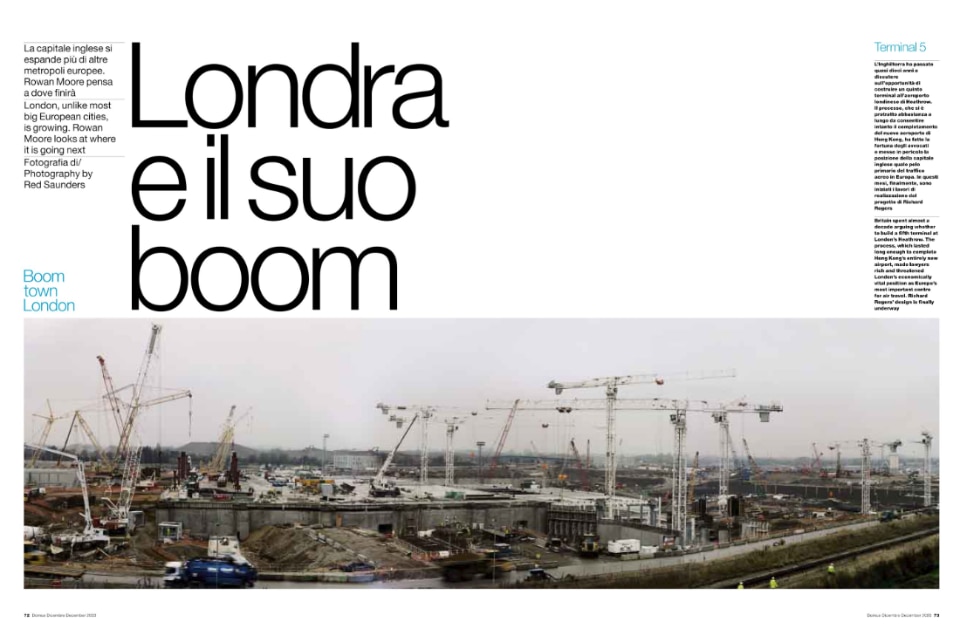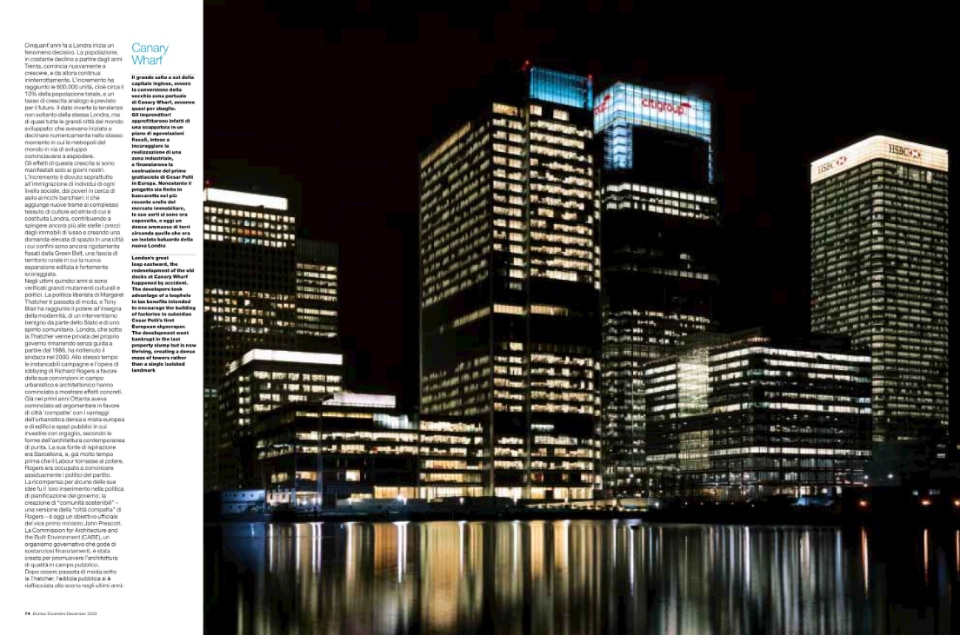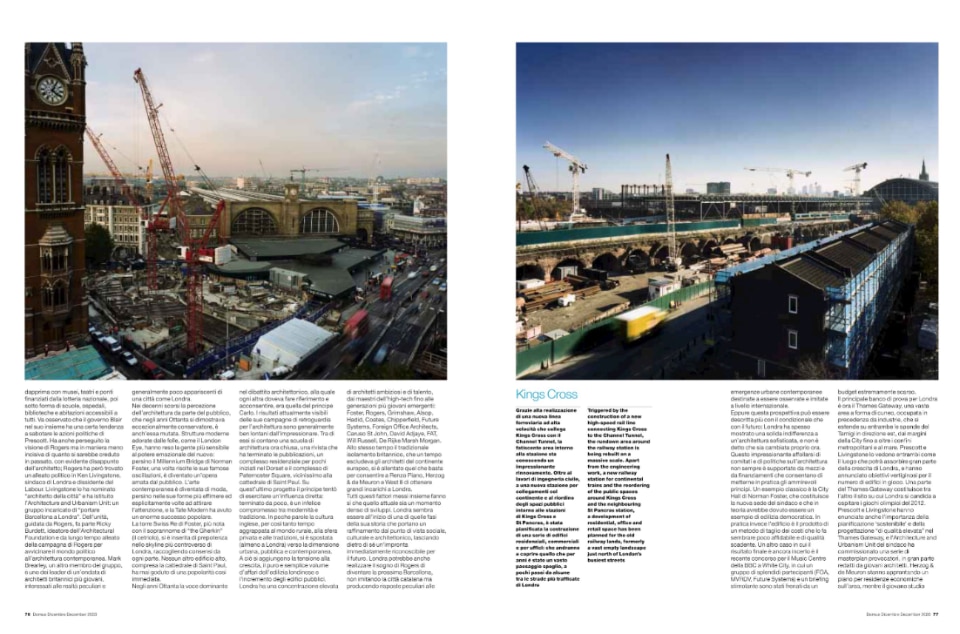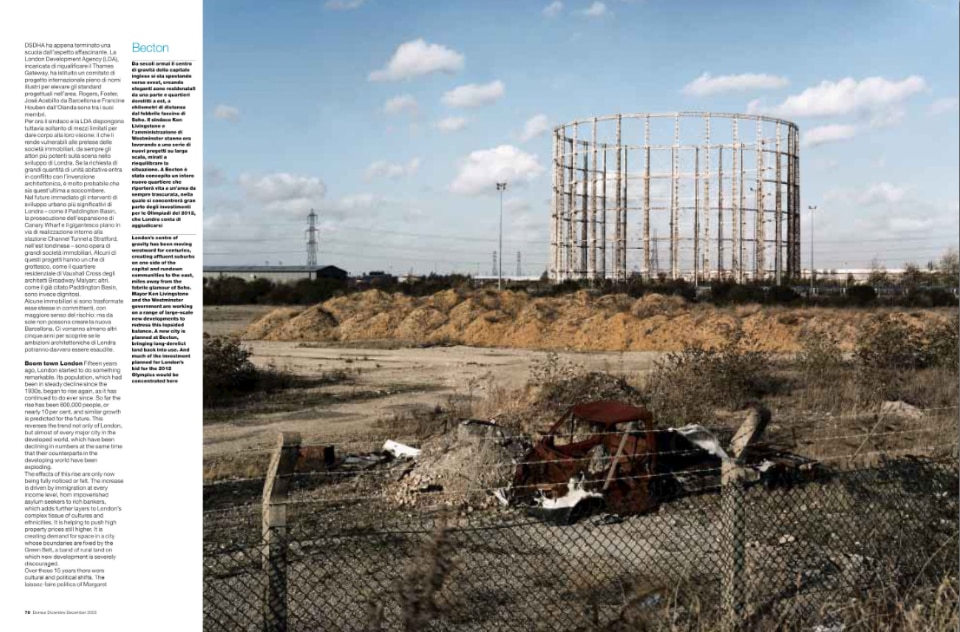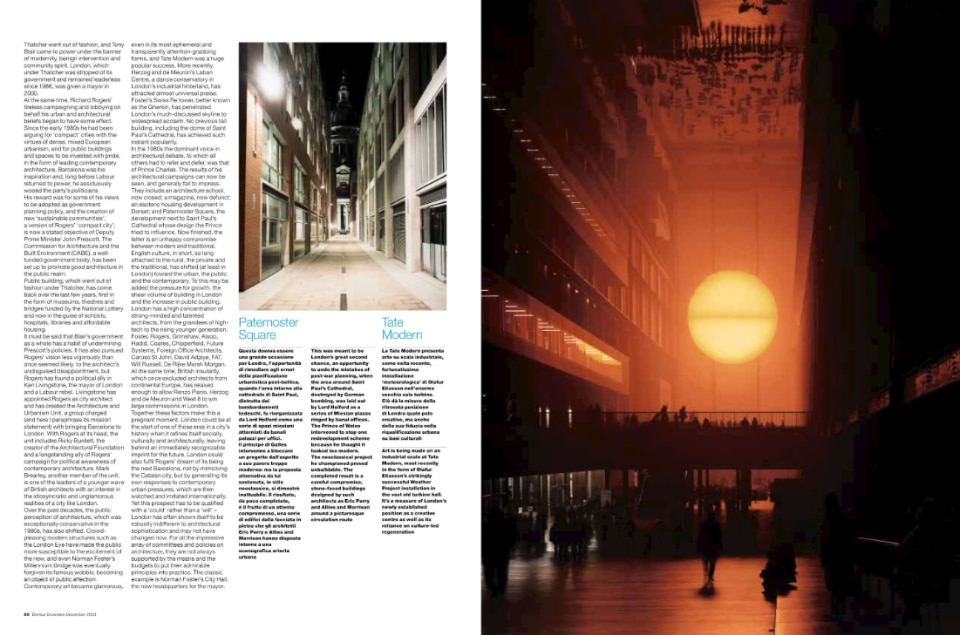An increasing distance is separating our culture from an image of London that might look any different from the one we see today, with its densification of sensationalist contemporary buildings — where Norman Foster's Gherkin is now one among many, and Renzo Piano's Shard is getting closer to its fifteenth birthday — with its unstoppable dynamism but also with the great social inequalities of a global metropolis, as well as an international role redrafted so many times over a minimal timespan, amidst multiple crises and Brexit.
Still, those shapes and that urban landscape are, the results of a quite recent process, which took on explosive force from the mid-1990s, beginning by the turn of the millennium to be translated into spaces and architecture, into a new personality for the city, which looked to Barcelona as a reference and which — it might sound strange both in comparison to the 1980s and to London has become today — invested heavily in its public dimension. Rowan Moore drew a portrait of the city at the height of such explosion, on Domus 865, in December 2003.
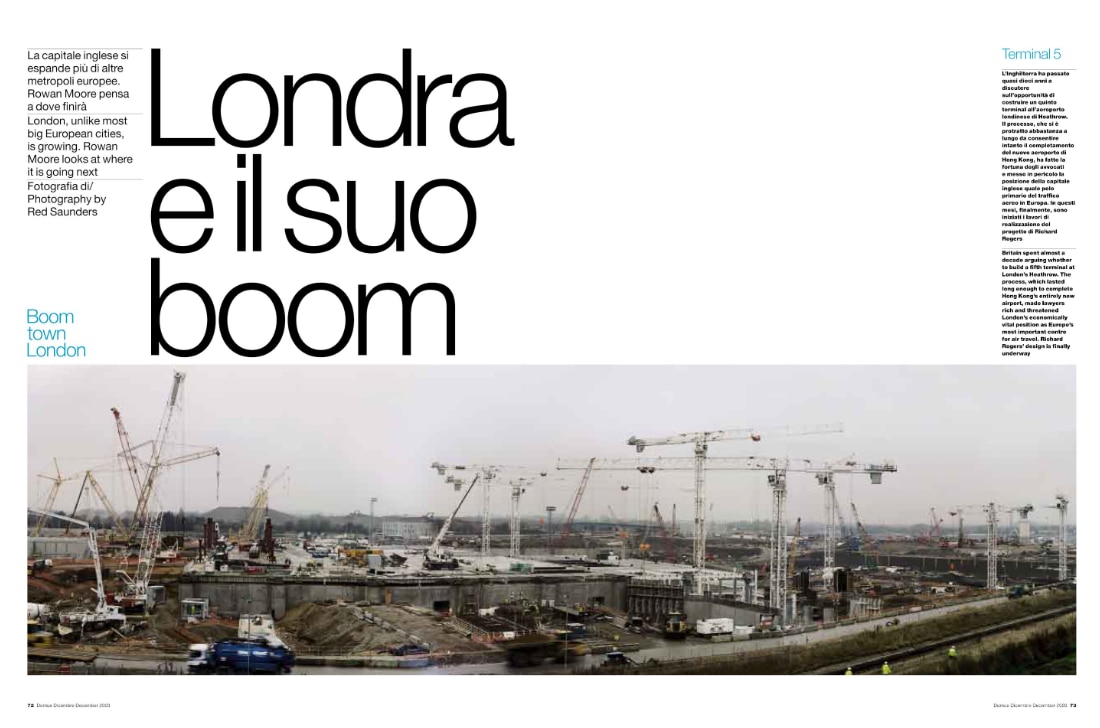
Londra e il suo boom
Fifteen years ago, London started to do something remarkable. Its population, which had been in steady decline since the 1930s, began to rise again, as it has continued to do ever since. So far the rise has been 600,000 people, or nearly 10 per cent, and similar growth is predicted for the future. This reverses the trend not only of London, but almost of every major city in the developed world, which have been declining in numbers at the same time that their counterparts in the developing world have been exploding.
The effects of this rise are only now being fully noticed or felt. The increase is driven by immigration at every income level, from impoverished asylum seekers to rich bankers, which adds further layers to London’s complex tissue of cultures and ethnicities. It is helping to push high property prices still higher. It is creating demand for space in a city whose boundaries are fixed by the Green Belt, a band of rural land on which new development is severely discouraged.
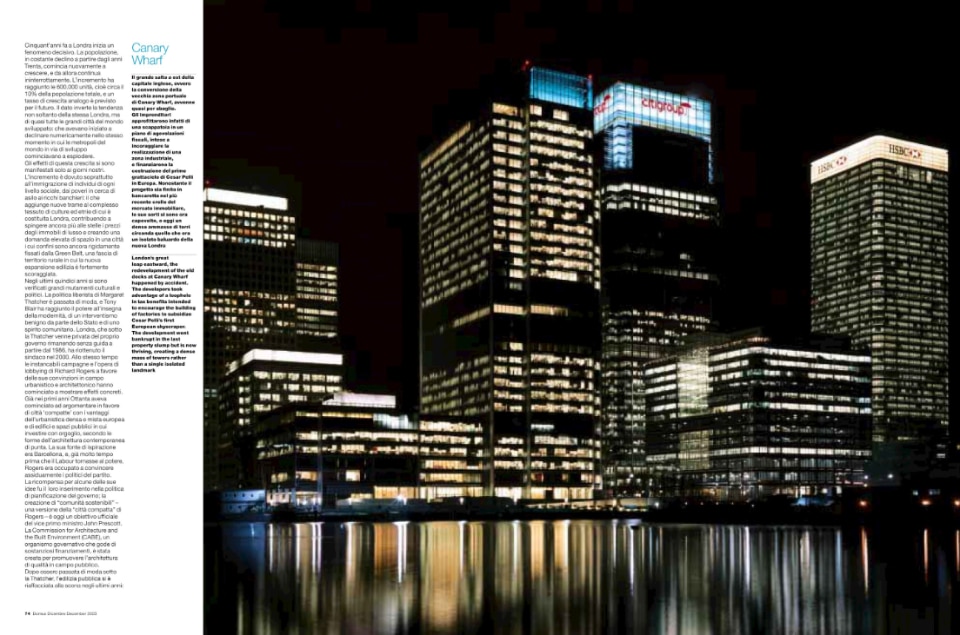
Over these 15 years there were cultural and political shifts. The laissez-faire politics of Margaret Thatcher went out of fashion, and Tony Blair came to power under the banner of modernity, benign intervention and community spirit. London, which under Thatcher was stripped of its government and remained leaderless since 1986, was given a mayor in 2000.
At the same time, Richard Rogers’ tireless campaigning and lobbying on behalf his urban and architectural beliefs began to have some effect. Since the early 1980s he had been arguing for ‘compact’ cities with the virtues of dense, mixed European urbanism, and for public buildings and spaces to be invested with pride, in the form of leading contemporary architecture. Barcelona was his inspiration and, long before Labour returned to power, he assiduously wooed the party’s politicians.
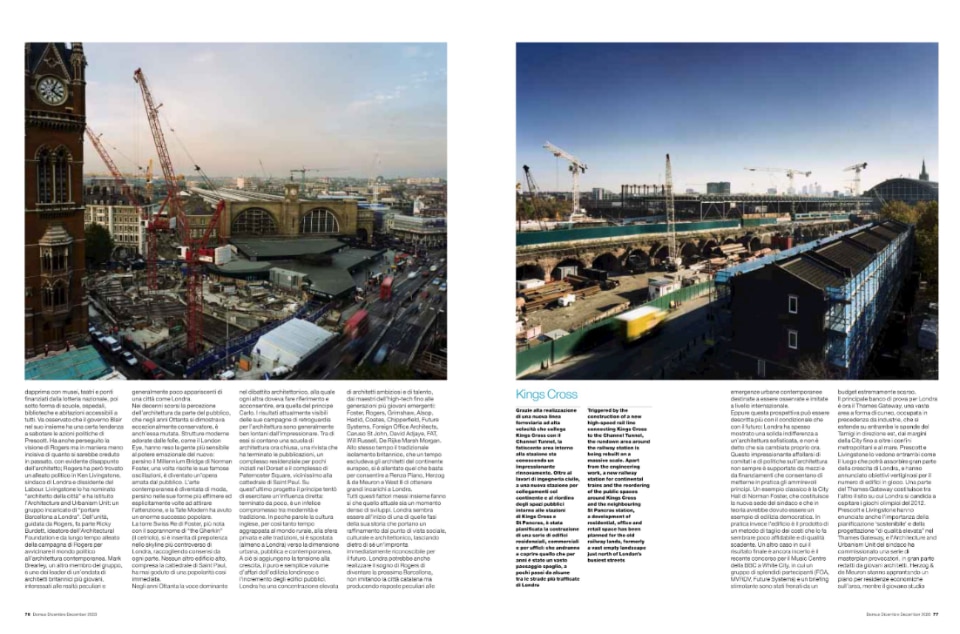
His reward was for some of his views to be adopted as government planning policy, and the creation of new ‘sustainable communities’, a version of Rogers’ ‘compact city’, is now a stated objective of Deputy Prime Minister John Prescott. The Commission for Architecture and the Built Environment (CABE), a well-funded government body, has been set up to promote good architecture in the public realm. Public building, which went out of fashion under Thatcher, has come back over the last few years, first in the form of museums, theatres and bridges funded by the National Lottery and now in the guise of schools, hospitals, libraries and affordable housing.
It must be said that Blair’s government as a whole has a habit of undermining Prescott’s policies. It has also pursued Rogers’ vision less vigorously than once seemed likely, to the architect’s undisguised disappointment, but Rogers has found a political ally in Ken Livingstone, the mayor of London and a Labour rebel. Livingstone has appointed Rogers as city architect and has created the Architecture and Urbanism Unit, a group charged (and here I paraphrase its mission statement) with bringing Barcelona to London.
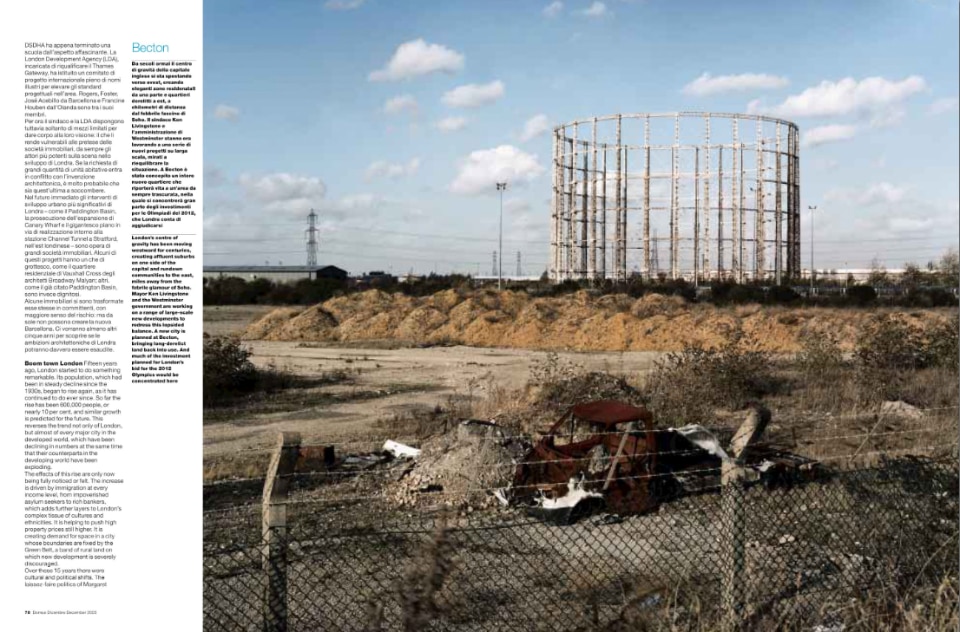
With Rogers at its head, the unit includes Ricky Burdett, the creator of the Architectural Foundation and a longstanding ally of Rogers’ campaign for political awareness of contemporary architecture. Mark Brearley, another member of the unit, is one of the leaders of a younger wave of British architects with an interest in the idiosyncratic and unglamorous realities of a city like London. Over the past decades, the public perception of architecture, which was exceptionally conservative in the 1980s, has also shifted. Crowdpleasing modern structures such as the London Eye have made the public more susceptible to the excitement of the new, and even Norman Foster’s Millennium Bridge was eventually forgiven its famous wobble, becoming an object of public affection.
Contemporary art became glamorous, even in its most ephemeral and transparently attention-grabbing forms, and Tate Modern was a huge popular success. More recently, Herzog and de Meuron’s Laban Centre, a dance conservatory in London’s industrial hinterland, has attracted almost universal praise. Foster’s Swiss Re tower, better known as the Gherkin, has penetrated London’s much-discussed skyline to widespread acclaim. No previous tall building, including the dome of Saint Paul’s Cathedral, has achieved such instant popularity.
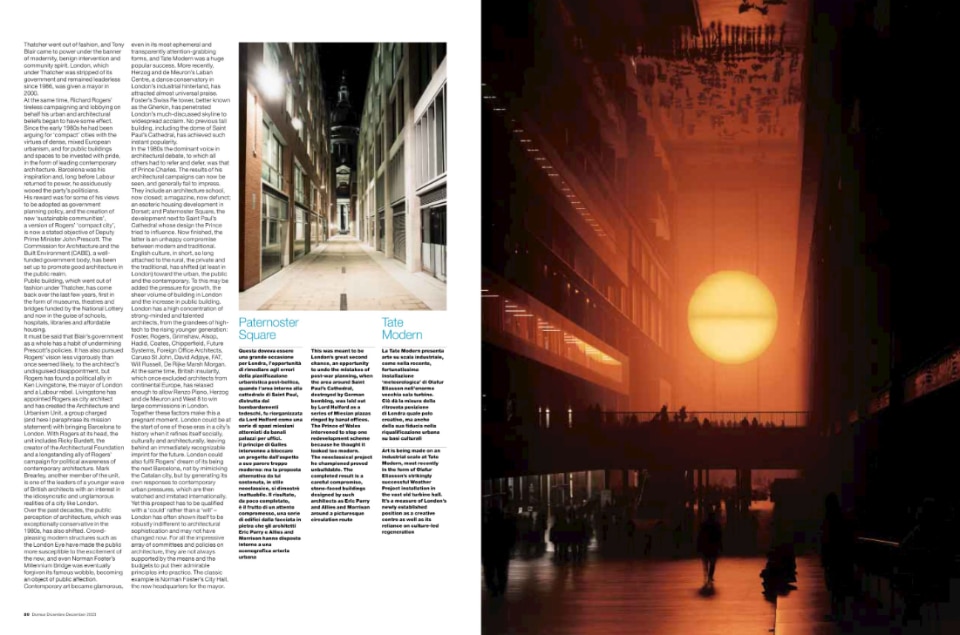
In the 1980s the dominant voice in architectural debate, to which all others had to refer and defer, was that of Prince Charles. The results of his architectural campaigns can now be seen, and generally fail to impress. They include an architecture school, now closed; a magazine, now defunct; an esoteric housing development in Dorset; and Paternoster Square, the development next to Saint Paul’s Cathedral whose design the Prince tried to influence.
Now finished, the latter is an unhappy compromise between modern and traditional. English culture, in short, so long attached to the rural, the private and the traditional, has shifted (at least in London) toward the urban, the public and the contemporary. To this may be added the pressure for growth, the sheer volume of building in London and the increase in public building.
London has a high concentration of strong-minded and talented architects, from the grandees of high-tech to the rising younger generation: Foster, Rogers, Grimshaw, Alsop, Hadid, Coates, Chipperfield, Future Systems, Foreign Office Architects, Caruso St John, David Adjaye, FAT, Will Russell, De Rijke Marsh Morgan. At the same time, British insularity, which once excluded architects from continental Europe, has relaxed enough to allow Renzo Piano, Herzog and de Meuron and West 8 to win large commissions in London. Together these factors make this a pregnant moment.
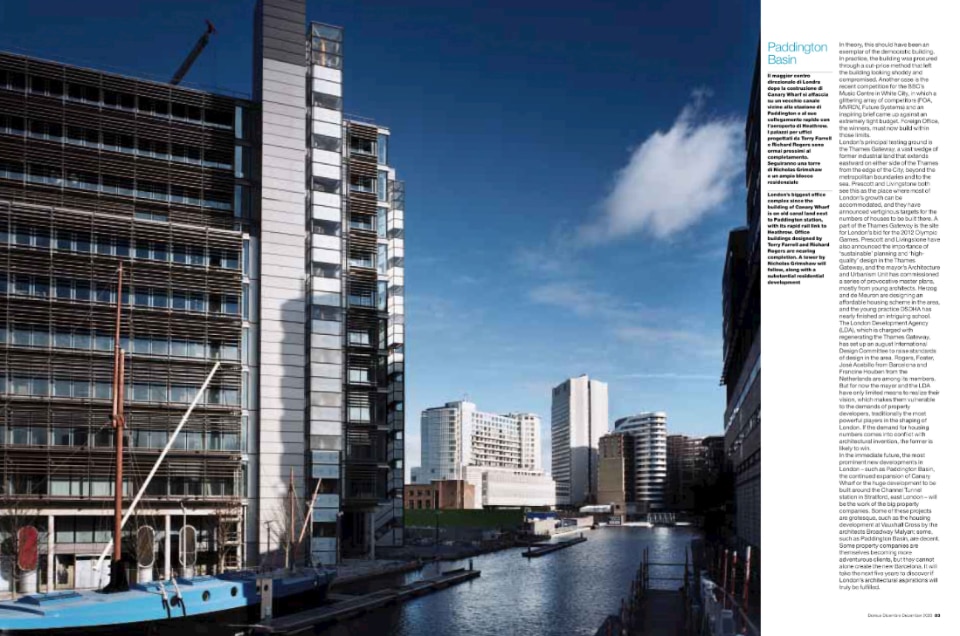
London could be at the start of one of those eras in a city’s history when it refines itself socially, culturally and architecturally, leaving behind an immediately recognizable imprint for the future. London could also fulfil Rogers’ dream of its being the next Barcelona, not by mimicking the Catalan city, but by generating its own responses to contemporary urban pressures, which are then watched and imitated internationally. Yet this prospect has to be qualified with a ‘could’ rather than a ‘will’ – London has often shown itself to be robustly indifferent to architectural sophistication and may not have changed now.
For all the impressive array of committees and policies on architecture, they are not always supported by the means and the budgets to put their admirable principles into practice. The classic example is Norman Foster’s City Hall, the new headquarters for the mayor. In theory, this should have been an exemplar of the democratic building. In practice, the building was procured through a cut-price method that left the building looking shoddy and compromised.
Another case is the recent competition for the BBC’s Music Centre in White City, in which a glittering array of competitors (FOA, MVRDV, Future Systems) and an inspiring brief came up against an extremely tight budget. Foreign Office, the winners, must now build within those limits. London’s principal testing ground is the Thames Gateway, a vast wedge of former industrial land that extends eastward on either side of the Thames from the edge of the City, beyond the metropolitan boundaries and to the sea. Prescott and Livingstone both see this as the place where most of London’s growth can be accommodated, and they have announced vertiginous targets for the numbers of houses to be built there. A part of the Thames Gateway is the site for London’s bid for the 2012 Olympic Games.
Prescott and Livingstone have also announced the importance of ‘sustainable’ planning and ‘high-quality’ design in the Thames Gateway, and the mayor’s Architecture and Urbanism Unit has commissioned a series of provocative master plans, mostly from young architects. Herzog and de Meuron are designing an affordable housing scheme in the area, and the young practice DSDHA has nearly finished an intriguing school. The London Development Agency (LDA), which is charged with regenerating the Thames Gateway, has set up an august International Design Committee to raise standards of design in the area. Rogers, Foster, José Acebillo from Barcelona and Francine Houben from the Netherlands are among its members.
But for now the mayor and the LDA have only limited means to realize their vision, which makes them vulnerable to the demands of property developers, traditionally the most powerful players in the shaping of London. If the demand for housing numbers comes into conflict with architectural invention, the former is likely to win.
In the immediate future, the most prominent new developments in London – such as Paddington Basin, the continued expansion of Canary Wharf or the huge development to be built around the Channel Tunnel station in Stratford, east London – will be the work of the big property companies. Some of these projects are grotesque, such as the housing development at Vauxhall Cross by the architects Broadway Malyan; some, such as Paddington Basin, are decent. Some property companies are themselves becoming more adventurous clients, but they cannot alone create the new Barcelona. It will take the next five years to discover if London’s architectural aspirations will truly be fulfilled.
- Opening image:
- London. Photo Claus Grünstäudl


